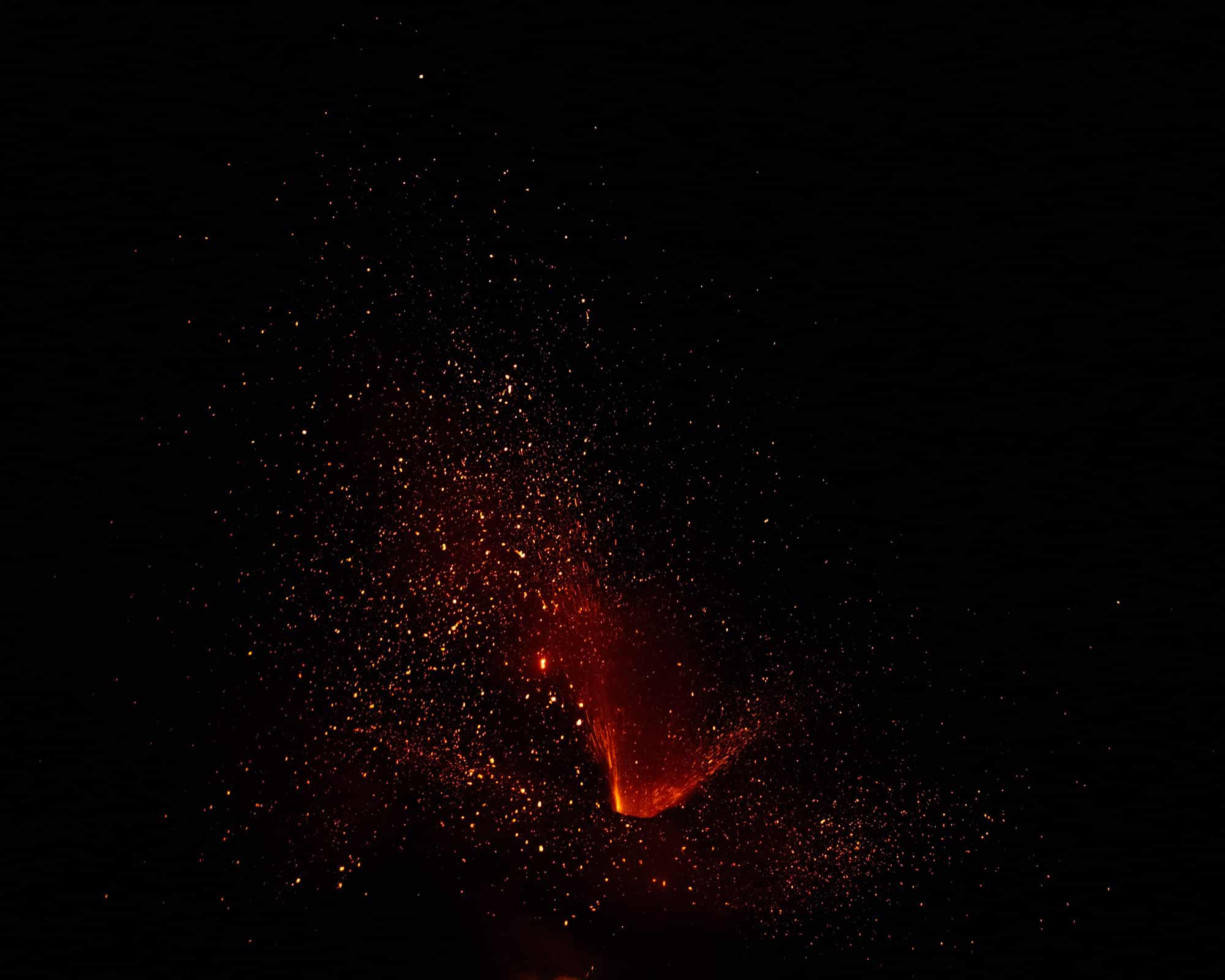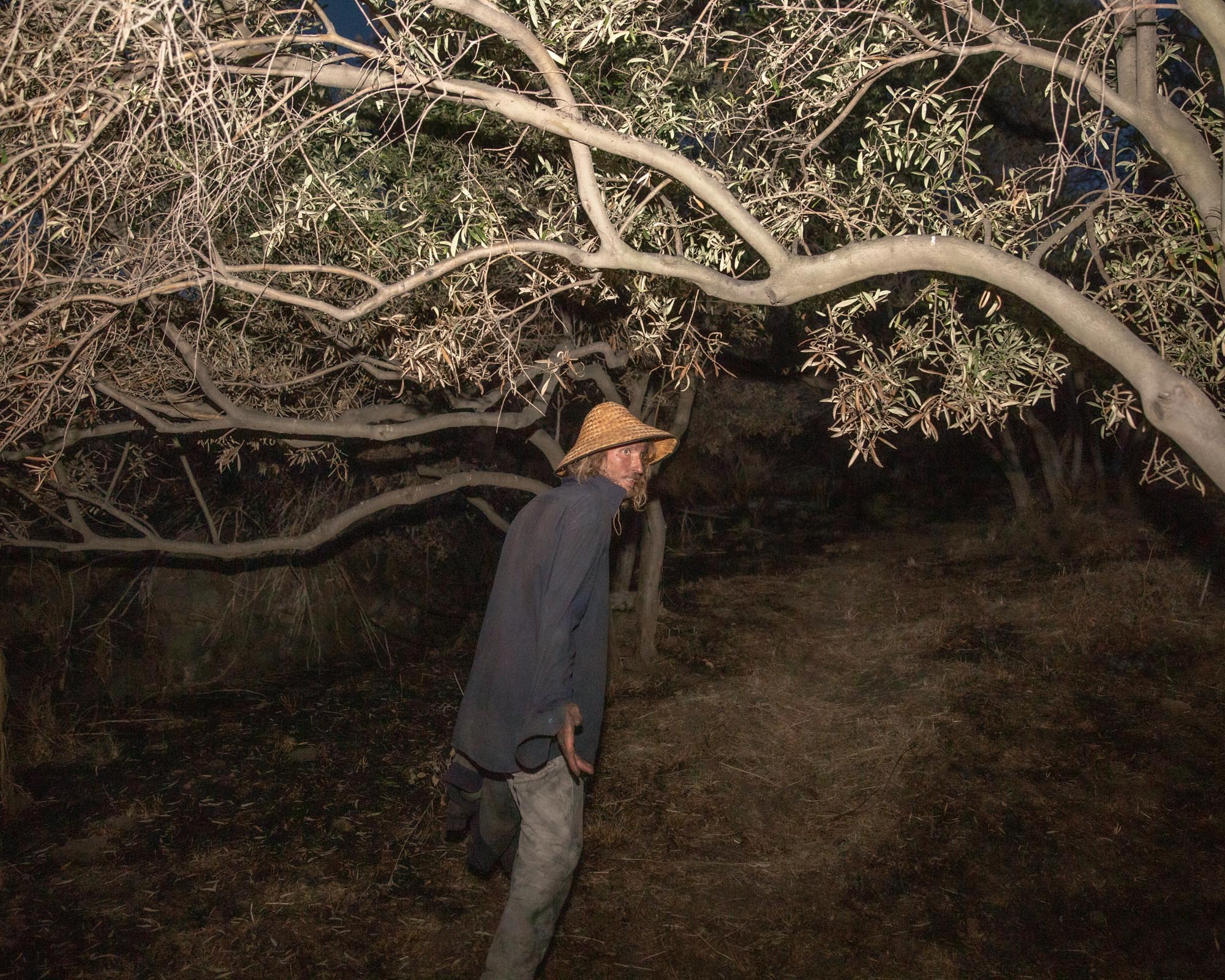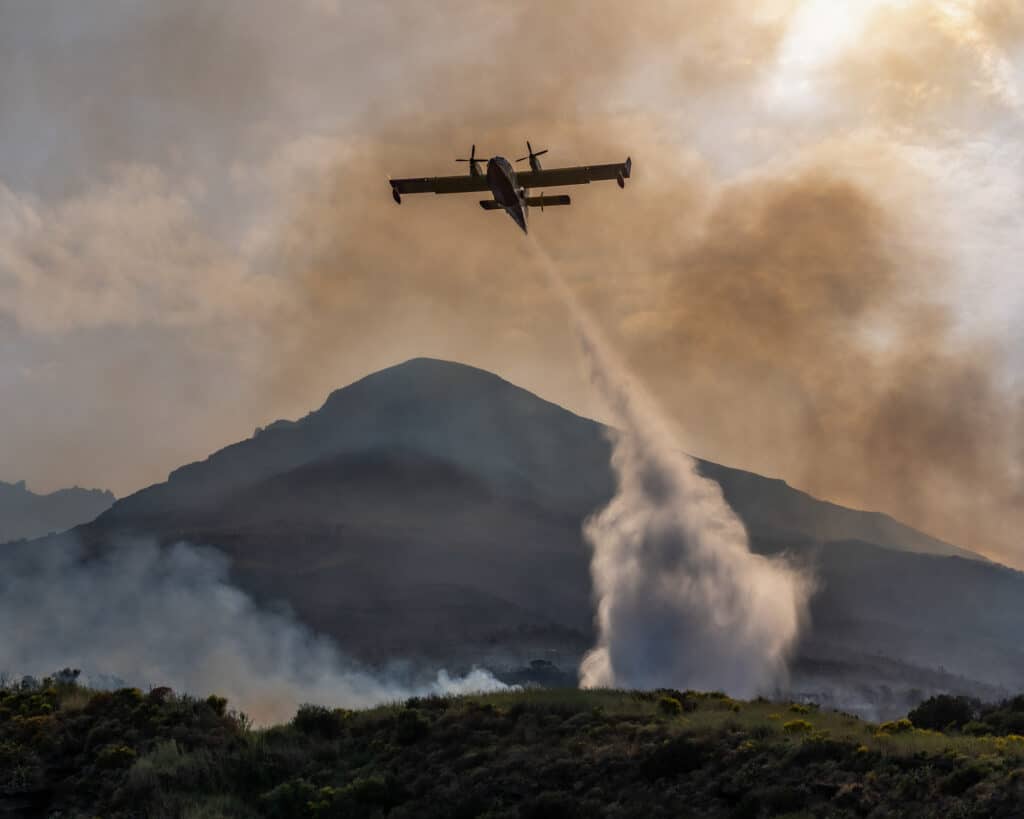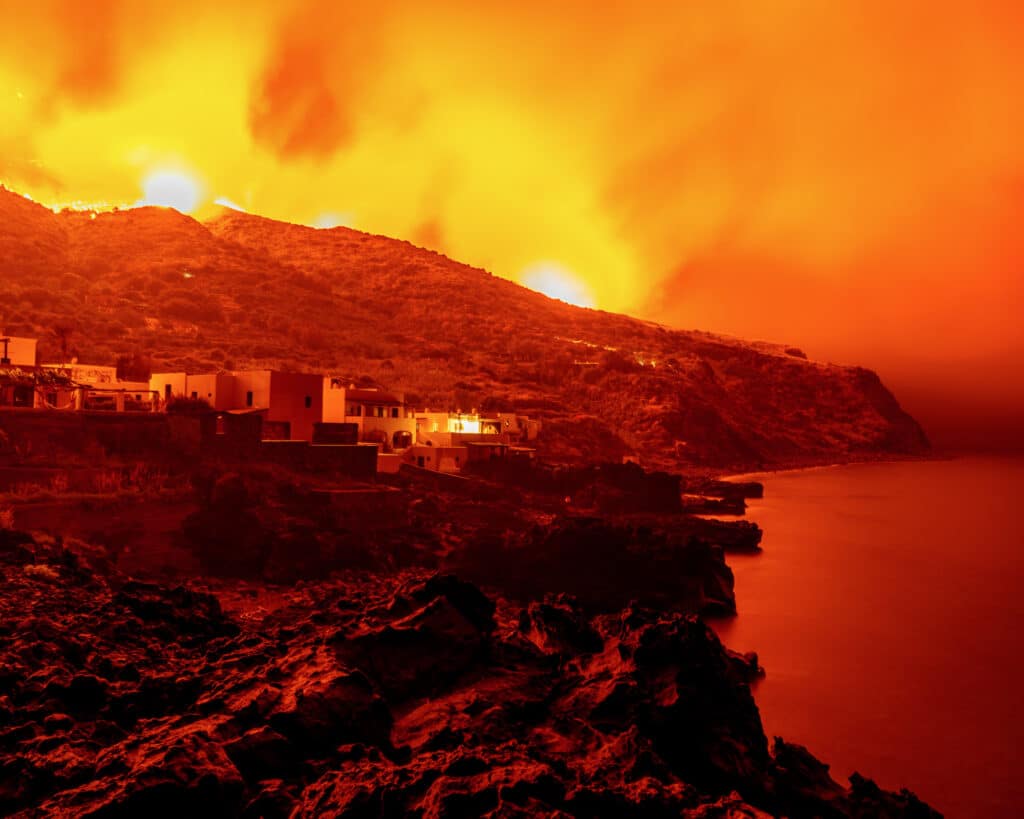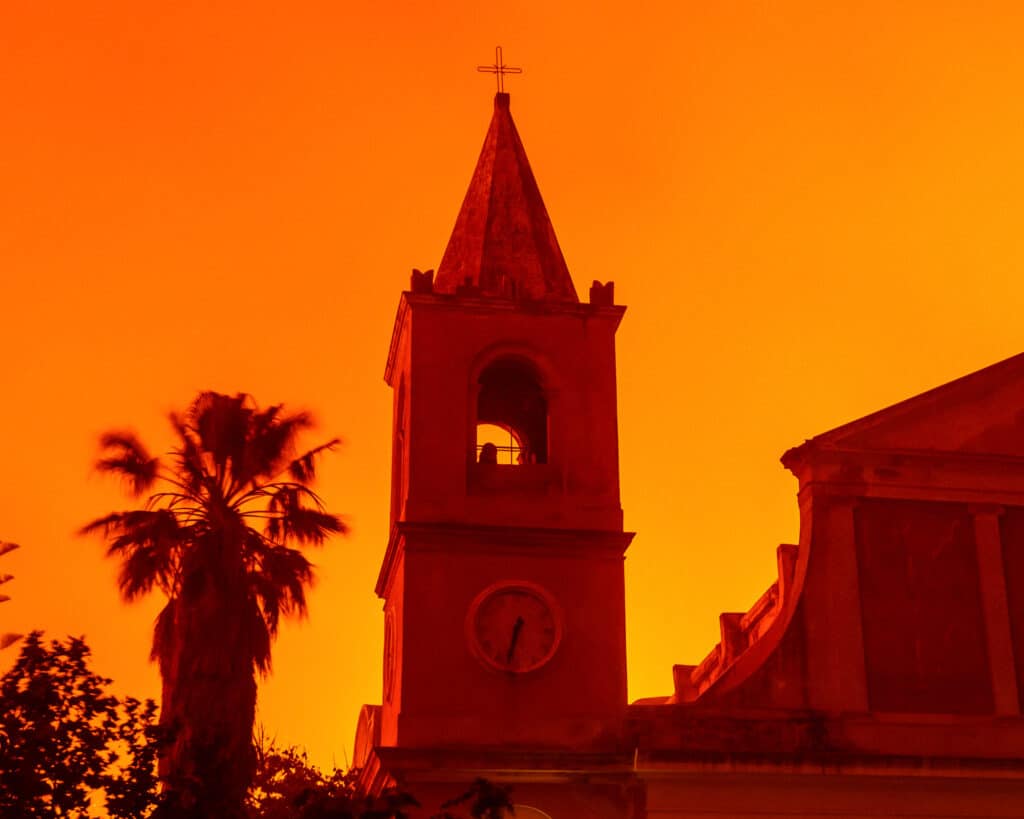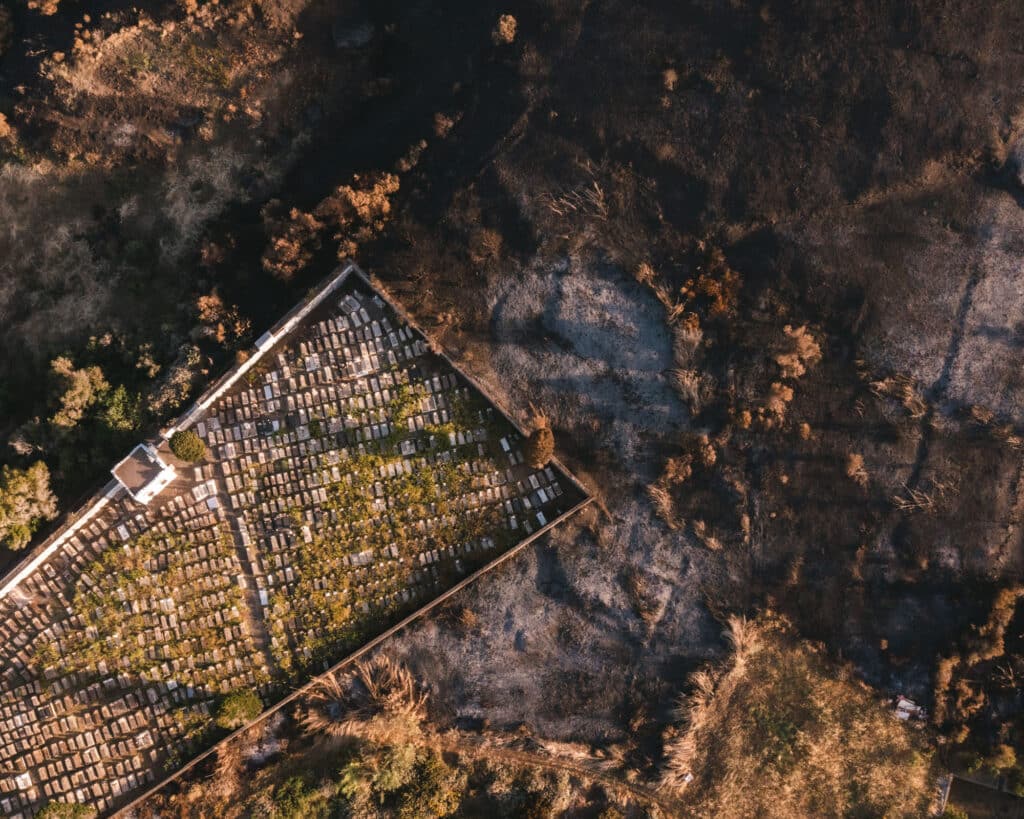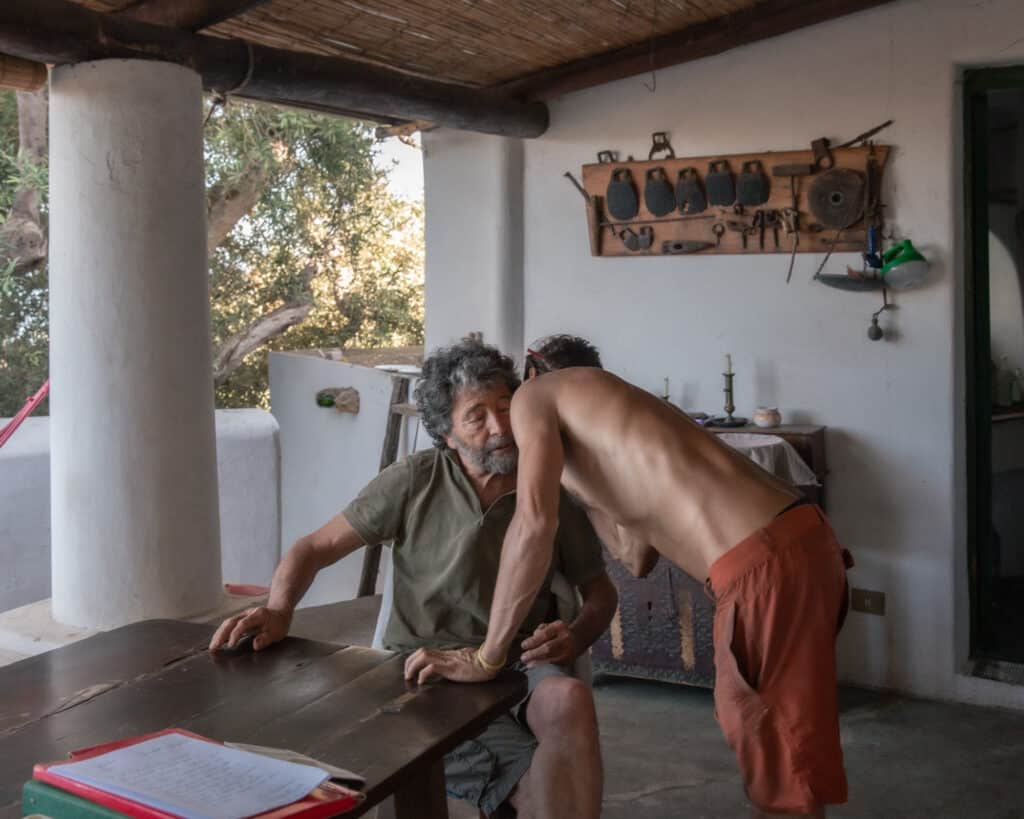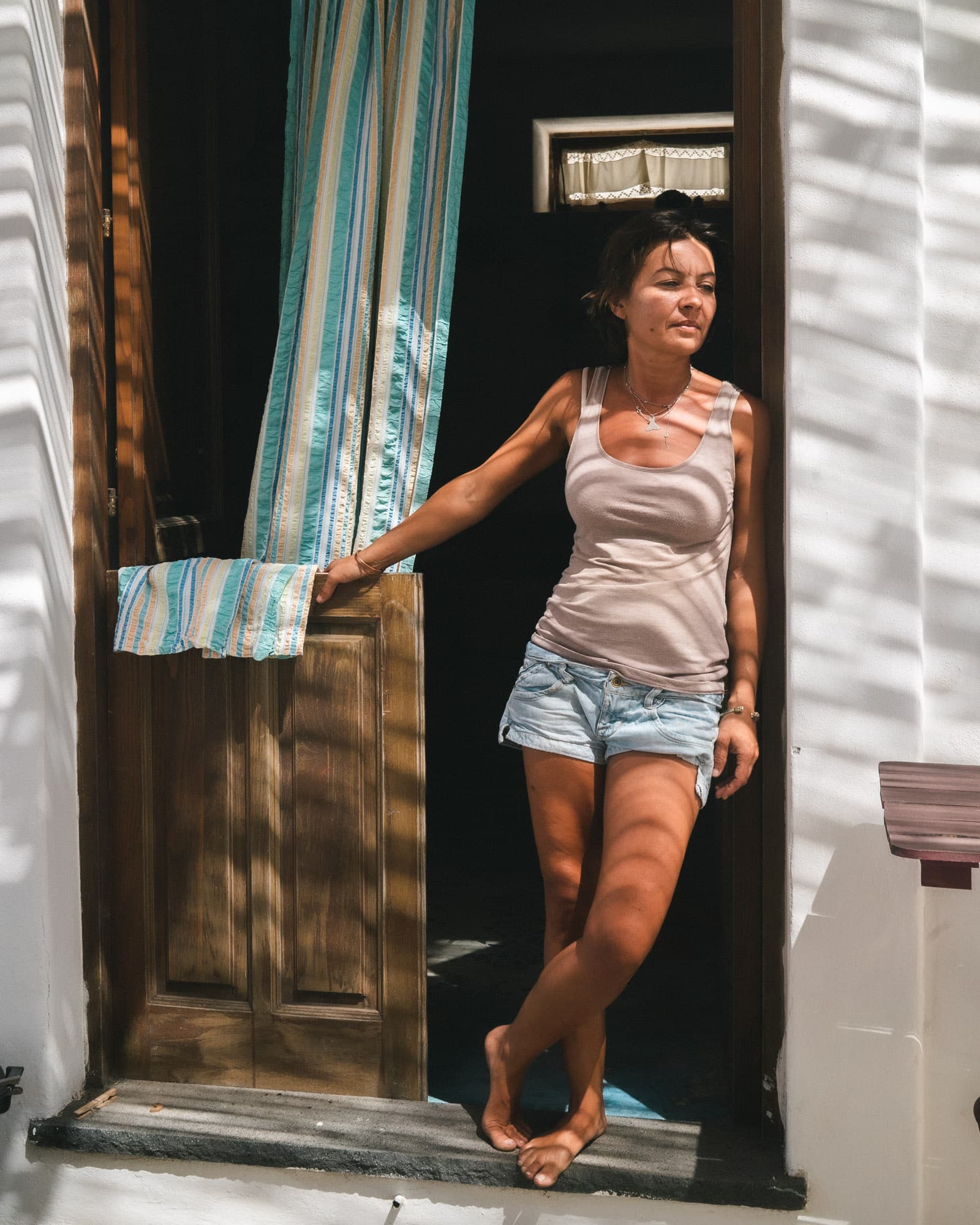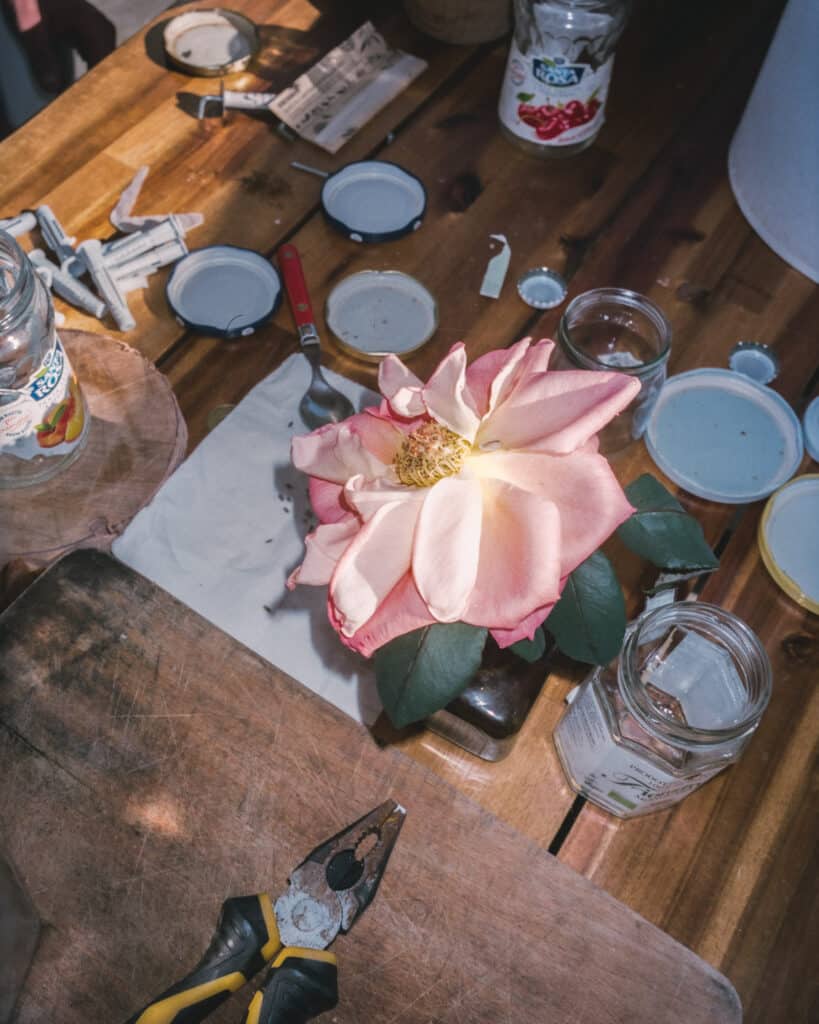Stromboli volcano has been spouting red fountains for the last 5,000 years. Ancient sailors called it “the Lighthouse of the Mediterranean,” as it helped them orient themselves at sea during the night. Today, Stromboli’s people live in two villages, caught between the craters and the sea. They come from many walks of life, but what connects them is life in a landscape whose idyllic quiet hides a frightening power.
On May 25, 2022, a calamity shattered the small island’s routine, but the volcano was just a passive spectator. That morning, the crew of the film production company 11 Marzo (contracted by RAI, the Italian national broadcasting company) started a fire on the slope above the village, inside a natural reserve. They were shooting an episode for a TV series about the Department of Civil Protection, the Italian version of FEMA, which is expected to intervene in the aftermath of emergencies. The script included a fire ignited by the lapilli of a volcanic eruption. It was a day of strong sirocco, a wind that regularly creates mayhem on the island, keeping boats from docking for days at a time. Predictably, the small fire lit by the crew quickly got out of hand and grew steadily, with those on the ground unable to stop it. Strombolians have known for centuries that lighting a fire during sirocco is hazardous, defying all common sense. A criminal investigation opened in response to the fire has yet to establish whether the film crew’s actions were, aside from unquestionably reckless, also illegal.
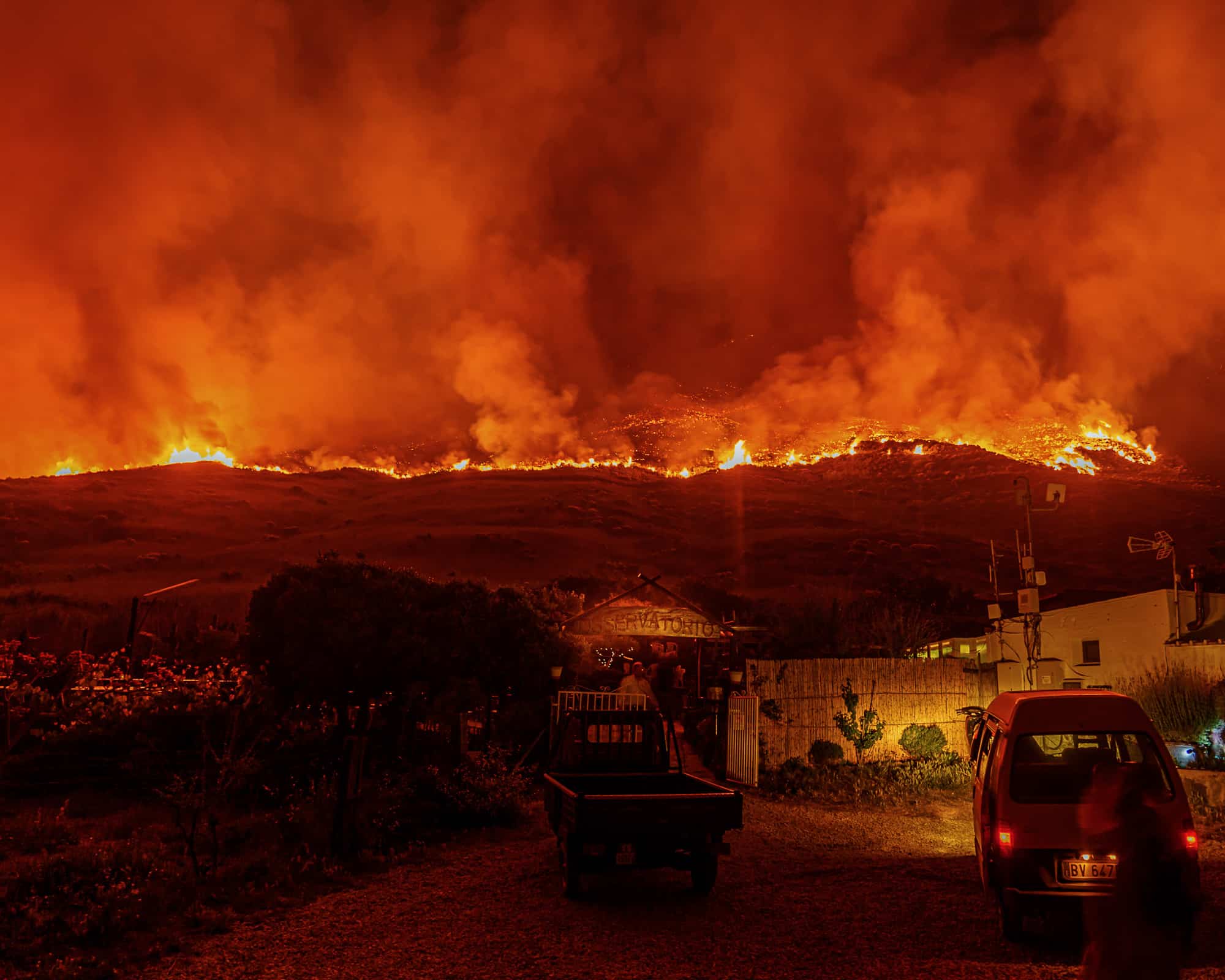
The Fire
The high number of fires in Sicily that morning delayed the arrival of the first water scooper on Stromboli by more than two hours. During that time, the fire developed unimpeded. The planes worked through the day but could not fly at night, so when sunset came, the islanders watched the last one fly away while the mountain was still ablaze. “I received one call after the other—‘Salvo, we’re on our own, let’s get ready,’” shared Salvatore Ben Fredy, a Strombolian resident. “The risk that threatened my property was the same as my neighbour’s. We helped each other however we could, and the ones who worked those days were not wearing a uniform.”
His lifetime friend Silvio Moreno lives nearby. He and many others recalled that when “a gust of wind suddenly lifted the flames even higher. It was like a wall advancing in our direction, and every time a new tree caught on fire it turned into a huge torch.”
It took 24 hours to extinguish the fire. Most of the islanders didn’t sleep at all. When it was over, about half of the island’s vegetation,hectares of land over a 12 km2 territory, was gone. The wild animals living on the slopes—goats, reptiles, birds and their nests—were gone too. “That night you could hear the sound of the animals hitting the houses. The most absurd scene I’ve seen when I evacuated my place was these blackbirds flapping in every direction because they had lost their minds. They were in shock. Some of them were on the ground, some kept crashing against the white walls,” said Antonietta d’Andraia, who lives on the other side of the village. “Earlier that evening I was on the roof with a fireman, when I saw a group of Strombolian kids, 20 years old, walking up the mountain with shovels to go stop the fire”, she adds. “I asked him: ‘And you? You can’t do anything about this?’ ‘No,’ he said, ‘the flames are too high.’ Later themother of one of those kids who walked up to the mountain was shouting and crying because she couldn’t find her son.”
Residents were shocked but, thanks to another shift in the wind’s direction and last minute deforestation around the village, the fire had stopped just before the houses, sparing them. Had you walked the streets of Stromboli at the end of May and paused to look at the horizon, you would have seen a Mediterranean paradise of blue sea and white houses. But if you turned toward the mountain, a black slope of destruction would have loomed over your head.
“In case someone tried to propose this as a script, it would get rejected, because it’s too grotesque,” said Jacopo Crimi, who moved to the island seven years ago. “A film crew burns a volcanic island to shoot a TV series about the Department of Civil Protection, whose intervention became necessary because of an actual fire started on set and whose local headquarters completely burnt to the ground. In all the most twisted ways, fiction became reality.”
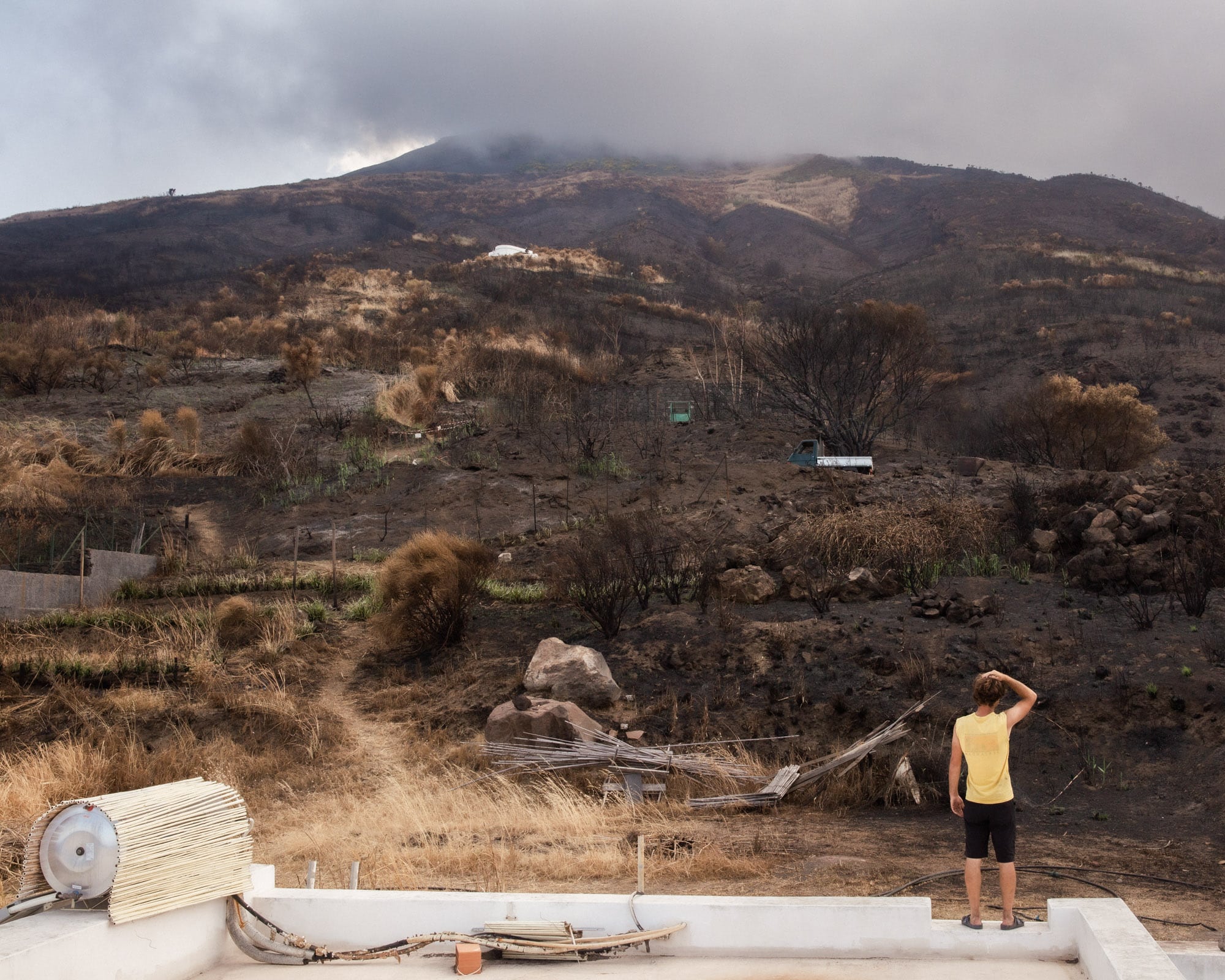
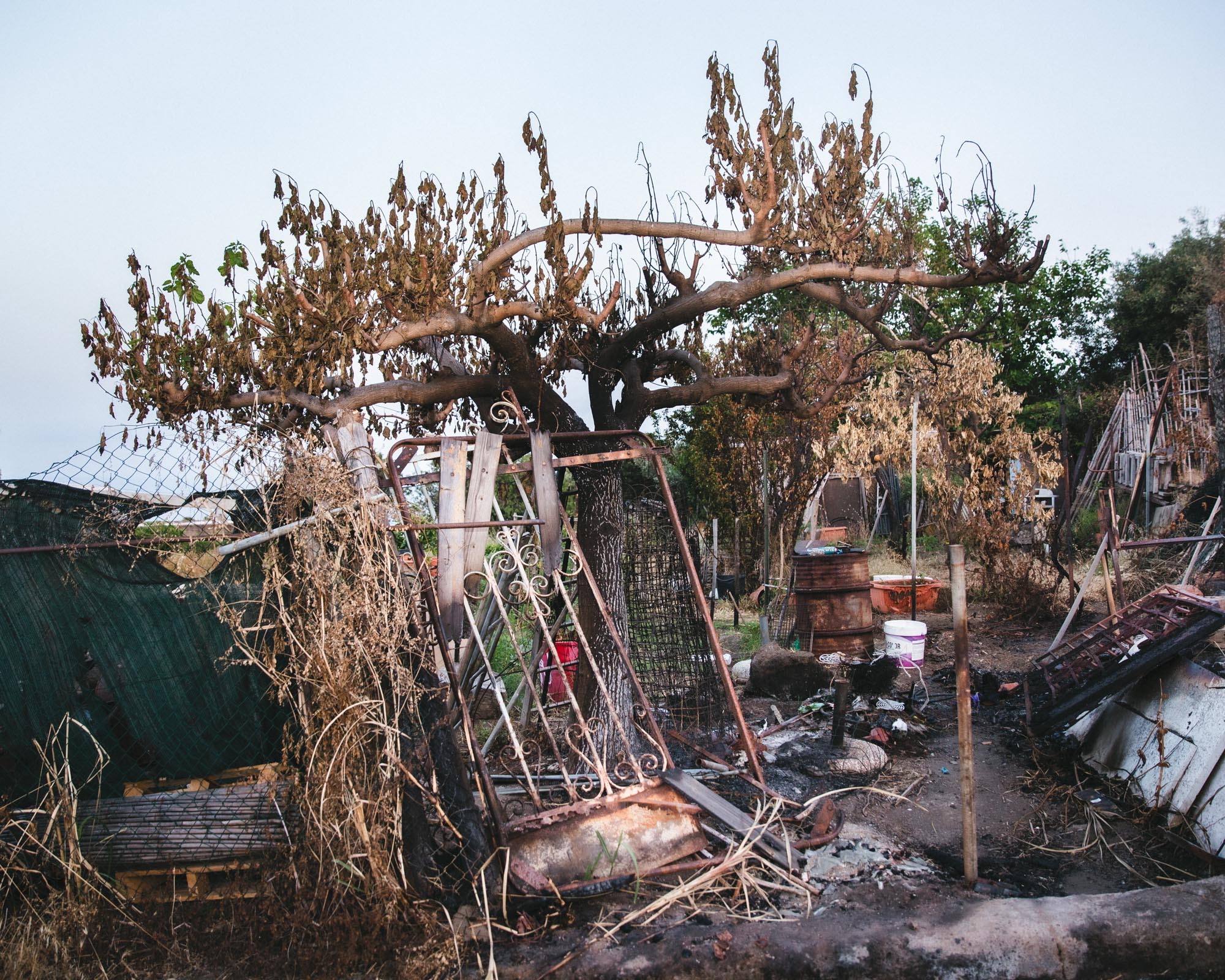
The Flood
One topic instantly came up in conversation: on a treeless slope, the first heavy rains could easily provoke mudslides. Without roots, the land could crumble.
During the summer, islanders tried to organize into groups to start replanting trees, but the State Forestry Corps, the institution in charge of this task, remained silent for months. And sure enough, the rain came, stronger than anyone had expected. It was 6 AM on August 12th. “I woke up with a tongue of mud and water on my bed. In a moment the rooms were invaded by a river of dirt and debris that blocked the doors,” writer Lidia Ravera revealed to La Repubblica.
The streams of water running down the slopes had in fact flooded the area, dragging enormous quantities of detritus into the houses. Sixty properties were damaged, and the streets disappeared beneath the mud. An abandoned landfill spilled decades worth of waste right into the sea, turning it into the color of the Seine. Just below it, one of the main beaches of the island is now closed, filled with waste. The story echoes like a cautionary tale: nature always presents its bill. When tragedy strikes flora and fauna, humans are next in line.
The People
11 Marzo, the film production company that started the fire, went on to deny all responsibility, attributing its cause to “chance and the unpredictable” and refusing to produce any documentation related to the insurance money until the month of October.
A few weeks earlier, the production house circulated a petition among the island’s business owners, asking for their consensus to come back and shoot the remaining scenes in September. A film crew stationed on a small island makes the economy turn, supporting accommodations, restaurants, transportation, and equipment rentals. Many of those whose properties were damaged were contracted as extras on the TV set in the weeks leading up to the fire. In a brazen manifestation of the malicious dynamic that sees big businesses invariably gain the upper hand on private citizens, exploiting them and confronting them with dilemmas that should never be on the table, the production company asked the people whose island had been devastated—and its tourist season largely compromised—to welcome them again. Some of the residents thought about it, but after the flood, looking at a nearly unrecognizable island, they expressed their denial almost unanimously.
The Volcano
Cinema depicted an important chapter of the island’s history in 1950, when Roberto Rossellini shot Stromboli, Land of God, a film whose success—largely due to the gossip about the director’s love story with leading actress Ingrid Bergman—shifted the image of the island from an abandoned volcanic rock to a coveted destination for nonconformist intellectuals. For better or worse, the film created the opportunity for Strombolians to work in tourism. Many who had travelled abroad to seek better fortunes elsewhere came back, and new residents moved in from continental Italy and Northern Europe.
In the absence of a concerted effort to rebuild, the production of an otherwise insignificant TV series threatens to start a new episode in the story of this fragile, multifaceted society. Residents have been resilient, but many, feeling abandoned by the institutions meant to protect them, are seriously reconsidering the choice to live there. Currently, hope for the island’s future comes mostly from individual and community actions. In the wake of the fire, a Sicilian nurseryman donated 500 olive trees to a local association called Attiva Stromboli, which started a fundraising campaign to pay for the necessary manpower and machinery to plant the trees and maintain them during the upcoming years.
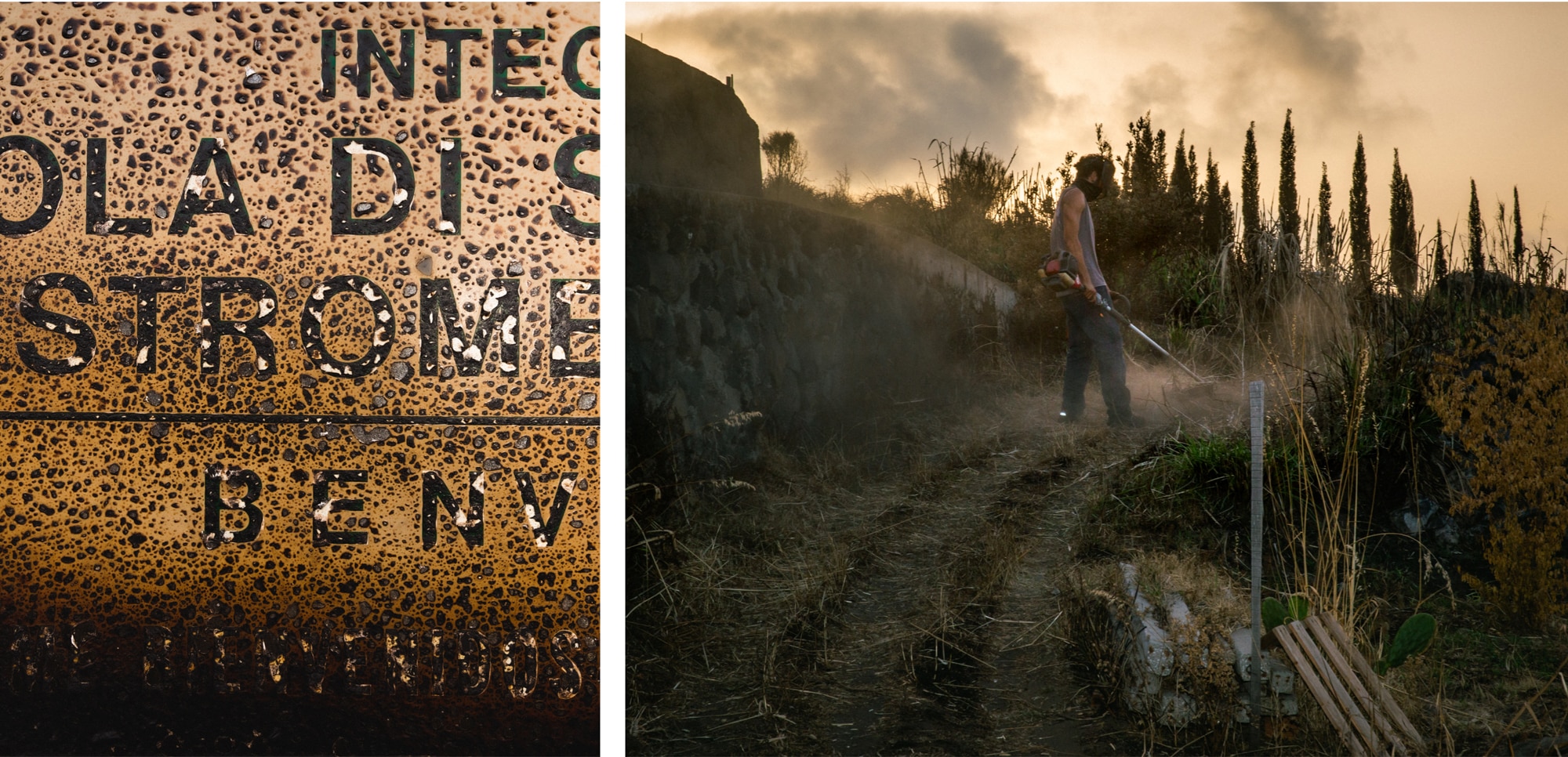
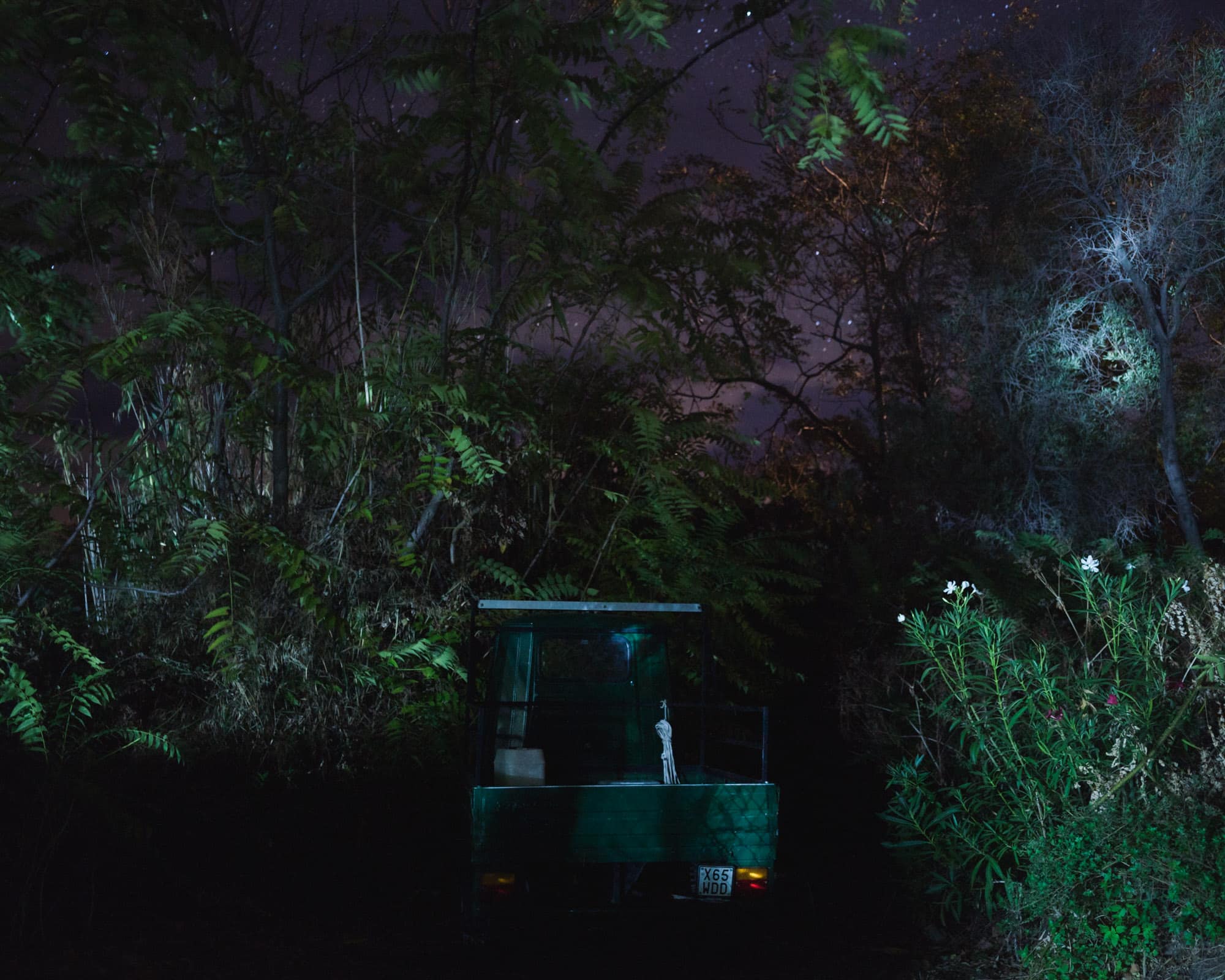
What has historically attracted ancient Greek merchants, sailors, artists, scientists, tourists, and film crews to this tiny island, as remote as it gets within the Mediterranean sea, is the volcano. Strombolians just call the mountain “he,” like a god that can’t be named and a friend they live with every day. “He,” who was supposed to play the villain in the TV script, has caused less environmental damage in the last 100 years than someone’s lighter ignited on a whim.
Stromboli is a quietly transcendental place, and its energy leaves a mark on those who experience it. The fire that runs just under the surface helps recontextualize human events, because whatever chapters of history our carelessness may write, they will mean nothing on the scale of geological time. “He” will be there long after we’re gone, so any efforts to protect the island’s ecosystem from predatory interests are meant to preserve its hospitality for us and the generations to come. The volcano’s time machine forces us to stand in front of a past much more remote than any we can mentally visualize, and a future we surely won’t be around to see. Thus, it has the power to bring us back to the only time we can really own.
To support the fundraiser started by Stromboli’s residents, visit the link: https://www.produzionidalbasso.com/project/stromboli-coltiviamo-un-idea/
